How a Photographer Captured an Incredible Green Flash Around Venus
![]()
Swedish photographer and self-described amateur astronomer Peter Rosén witnessed a magnificent and rare sight in Sweden’s night sky on January 8. While watching Venus rise above Stockholm’s skyline, Rosén captured a colorful green flash around the planet.
“I was shooting the Moon and Venus rising over Stockholm starting before 7 AM (local time),” Rosén tells PetaPixel over email. Rosén says he was capturing images in quick succession using his Canon EOS 5D Mark IV DSLR and a Tamron 150-600mm f/5-6.3 Di VC USD G2 telephoto lens set to its 600mm focal length. The image sequence was shot at ISO 3200 with a 0.6-second exposure and f/8 aperture.
![]()
The animated sequence above comprises 11 frames. The green flash itself lasted about just a second or two. The GIF shows crops from Rosén’s larger overall photo.
![]()
Amazing Sighting is Rosén’s Second Planetary Green Flash
Despite the rarity of seeing a green flash around a planet, which Space Weather describes as maybe “the best ever,” it is not the first time Rosén himself has seen something like this around a planet.
“Besides the Sun where it is more commonly observed, I have filmed it on Mars in 2018,” the photographer says.
![]()
“Along with the green flash, what is quite astonishing if I may say so myself is that I managed to get a quite decent image of Mars by stacking some thousands of frames from the extremely turbulent stream that turns out a round red planet with surface features, a bluish polar cap and some bluish haze / clouds,” Rosén tells PetaPixel. “That illustrates the power of the software at our disposal combined with a lot of experience, I guess.”
![]()
“It is often said that these events are extremely rare, and of course, it is true as I have only observed it twice in six years,” Rosén says.
“But the reason that I happened to catch them is that I did not give up photographing the planets through a telephoto lens or a telescope even though the planets were at very low altitudes and with strong turbulence in the atmosphere. Most amateurs see no use to photograph under such difficult conditions and turn to better positioned targets. I always have my reasons not to give up and sometimes it pays off.”
Peter Rosén Has Long Loved Space
Rosén has been interested in the night sky since he was a child. When his mother pointed out Mars and told a young Rosén that it wasn’t a star but a planet, he was “absolutely amazed” that he could view another world with his naked eyes.
“Later, at age 16, I got the opportunity to watch Saturn in a small telescope, and after that, I was hooked. At 18, I bought my first simple Newtonian telescope, got a Braun Paxette viewfinder camera, and started taking pictures of the Sun, Moon, and planets through the telescope on slide film.”
“I took my first color image of Jupiter on March 20th, 1974, at 9:22 PM UTC, soon 50 years ago! The original image on the slide film is only about 1.2 mm wide, which explains the grain from excessive magnification,” Rosén says.
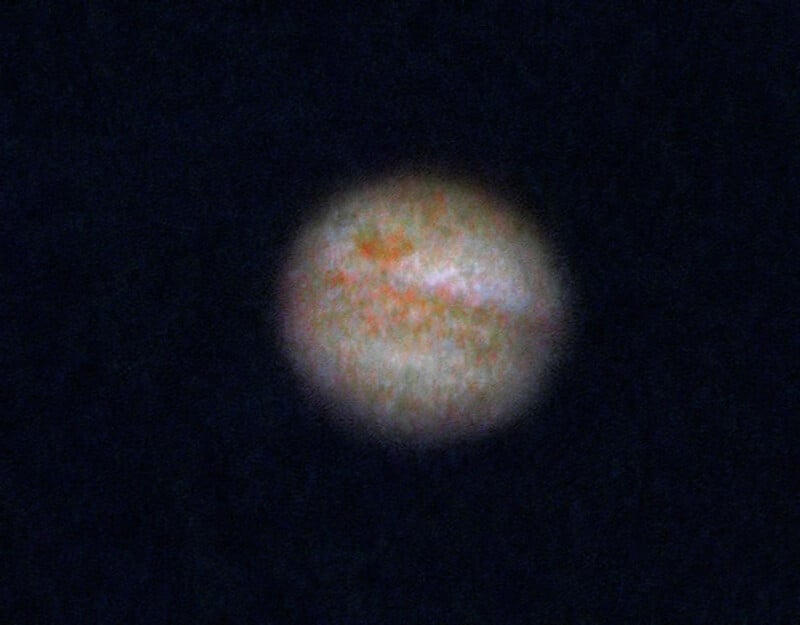
“Nevertheless, for me it has become an important document as it was taken shortly after Pioneer 10 reached Jupiter on December 3rd, 1973, and before Pioneer 11 one year later. These were the first probes to visit the giant gas planet and send images back to Earth.”
“I think that my image shows well the same main features as the images from Pioneer 10, a big Great Red Spot (GRS) much bigger than today and the disappeared South Equatorial Belt (SEB) below the GRS.”
“This was not photographed by many in 1973!” Rosén adds.
A Very Versatile Photographer
While interested in general photography these days, Rosén’s primary interest initially was astronomy and taking pictures through the telescope.
“Eventually, I became a photographer and digital artist starting with a Texas Instruments TI-99/4A in the early 1980s and a Macintosh IIfx in the early 1990s with the launch of the first version of Photoshop. For me, it has always been a cross-fertilization between photography and astrophotography,” he explains.
Rosen notes that he has not separated his astrophotography from his more general photography, arguing that for him, “the Universe is part of my everyday life, just like my family or my dog.”
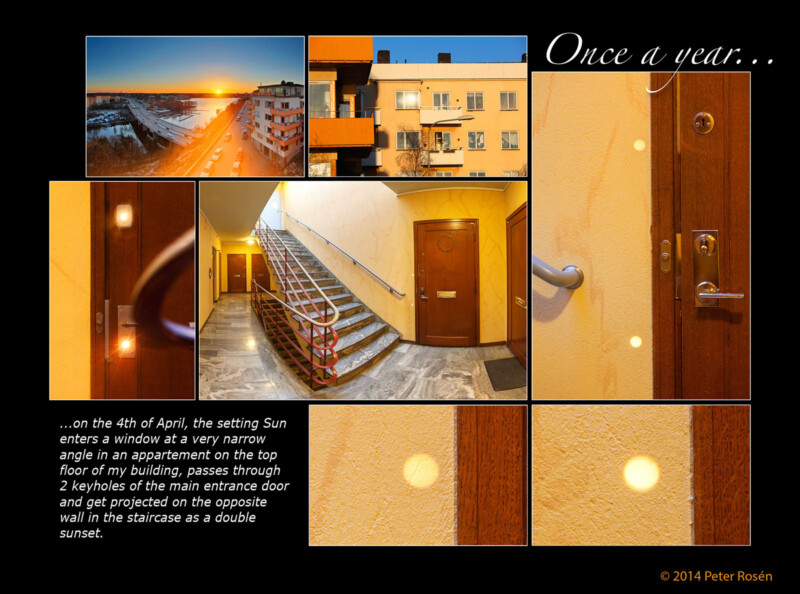
Over the years, many of his images have been featured on Space Weather‘s homepage and other astronomy websites.
He has also worked with images created by scientists and professional astronomers, a common and vital part of scientific projects and missions.
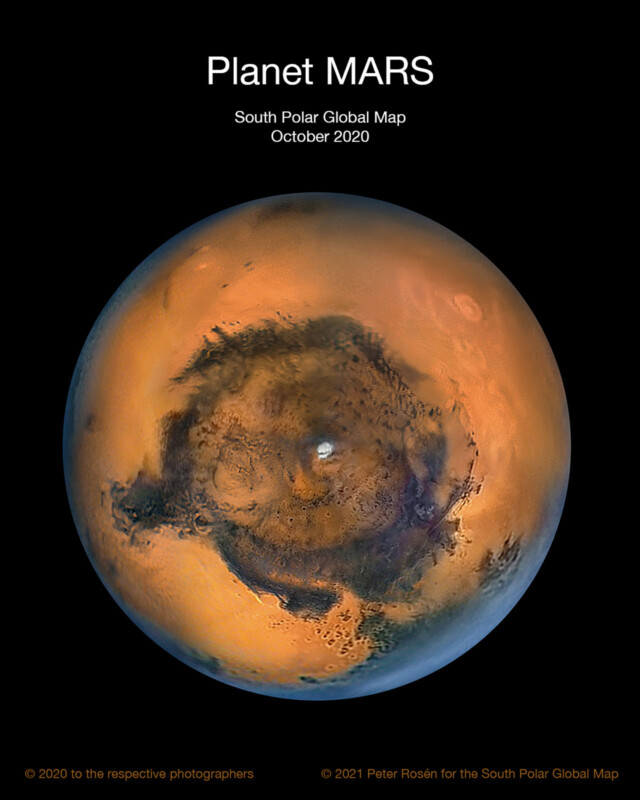
Rosén loves space so much that he even created a 30-image animated Valentine’s Day card using images he captured on February 8th, 2022.
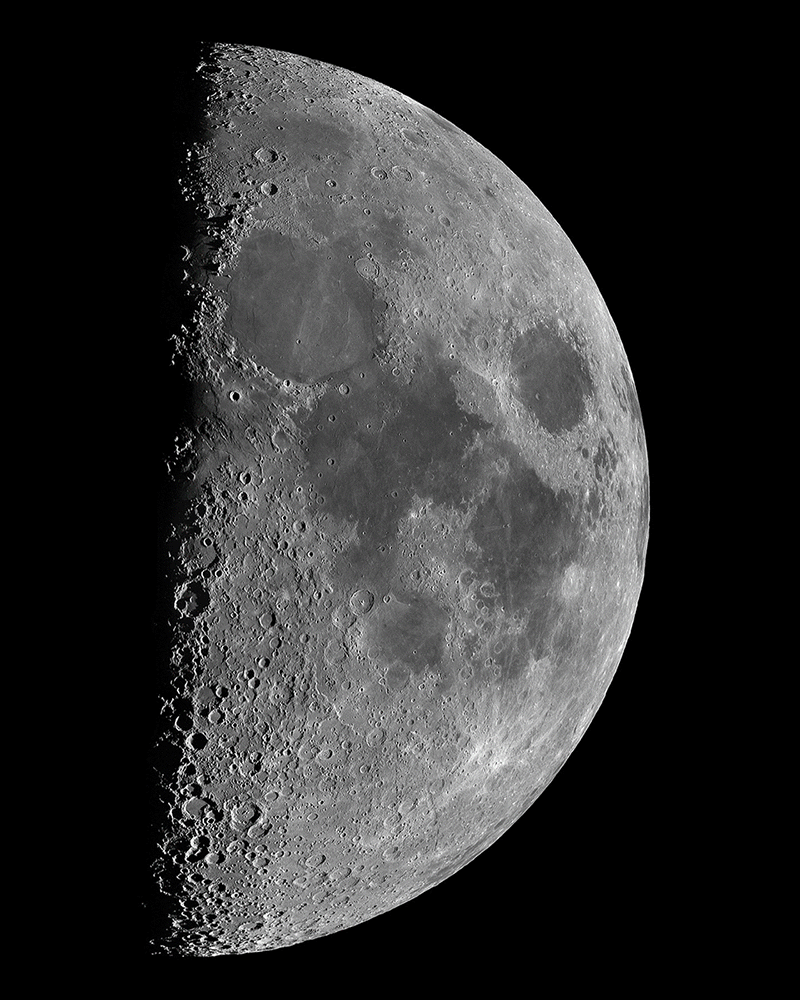
Some of Rosén’s work has also been featured as part of NASA’s Astronomy Picture of the Day.
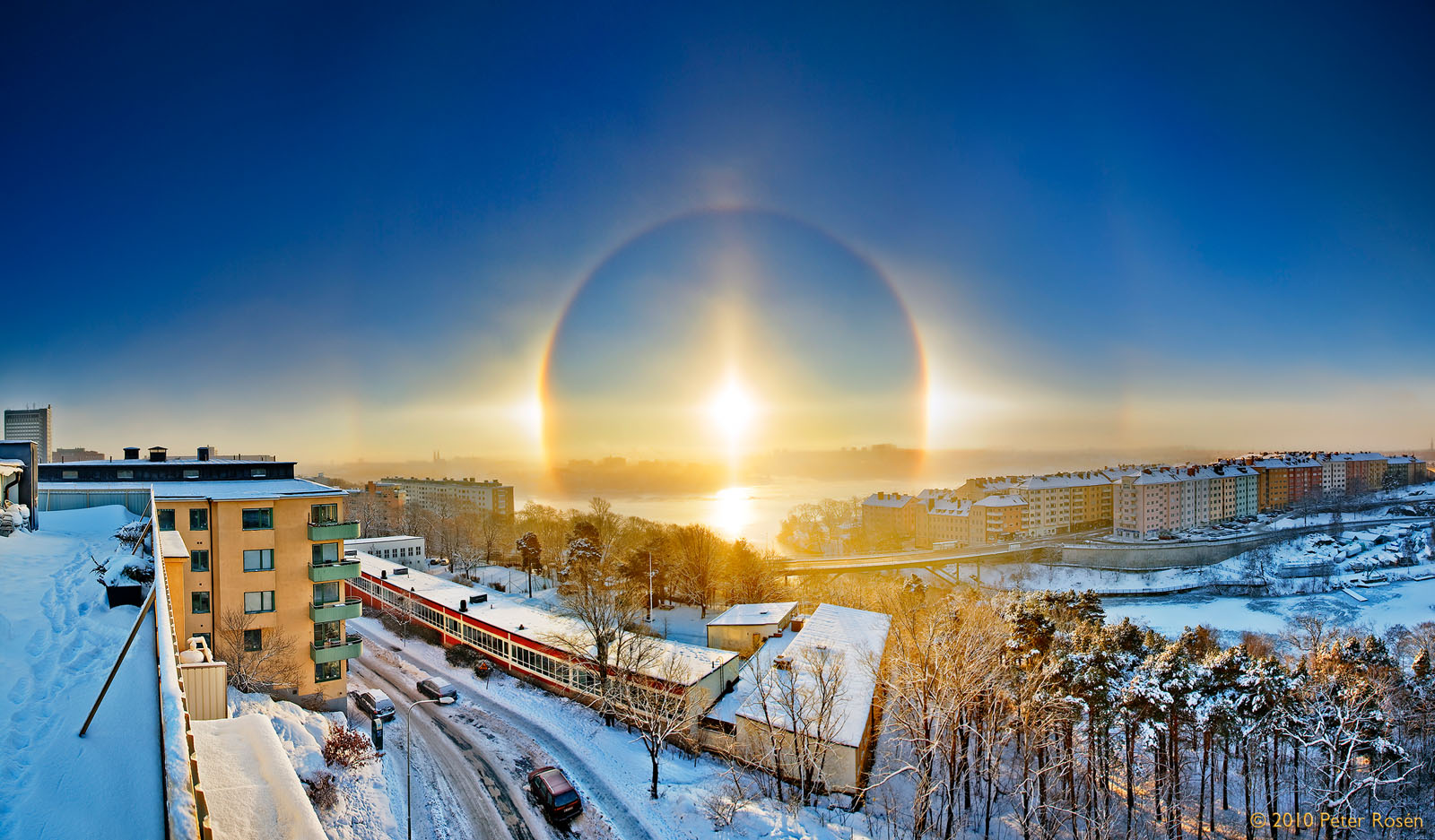
The video above featured by NASA is just a snippet of one of Rosén’s two significant projects concerning Jupiter.
“The first one took 6 month of work full time (free time of course but many hundreds of hours),” he says, noting that it was actually featured on PetaPixel in 2014.
The second project took a full year to complete and was Rosén’s contribution to a Pro-Amateur collaboration with the NASA Juno mission.
“I was invited to a planetary meeting in London organized by the British Astronomical Association and NASA and gave a lecture of this project in May of 2018,” he says. Rosén discussed the project in detail with the Planetary Society in a pair of articles (1, 2).
More of Peter Rosén’s work is available on his Instagram page. Followers will find many lovely photos of space and dogs, and what better combination is there?
Image credits: All images © Peter Rosén. The featured image combines Rosén’s GIF of the Venus green flash and his wider view of Stockholm. The cropped view of Venus is centered over the planet’s location in the sky.